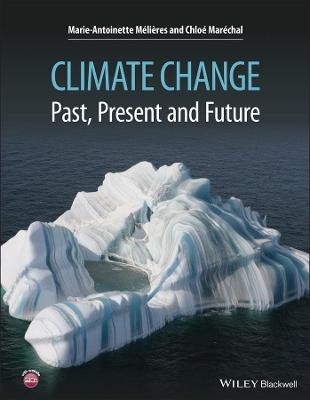
Climate Change
Wiley-Blackwell (Verlag)
978-1-118-70852-1 (ISBN)
- Titel z.Zt. nicht lieferbar
- Versandkostenfrei innerhalb Deutschlands
- Auch auf Rechnung
- Verfügbarkeit in der Filiale vor Ort prüfen
- Artikel merken
Marie-Antoinette Mélières, Docteur d’Etat in physics, taught basic physics and, later, climate and environmental science at Joseph Fourier University of Grenoble 1 and at the University of Savoie. Her research has covered various areas ranging from molecular spectroscopy and atmospheric physics to environmental and climate science. In 1995 she established the newsletter Global Change, published by the French National Committee on Climate Change, under the authority of the Academy of Sciences. The Committee is the French branch of the four international programs IGBP, WCRP, IHDP and Diversitas. She continued to edit this publication until 2008. Chloé Maréchal, PhD, geochemist, is Maître de Conférences in the Observatoire des Sciences de l’Univers at Université Claude Bernard Lyon 1, where she teaches Earth Sciences at first university degree level and at Masters level. In her research into the biogeochemical cycles of copper and zinc in the Earth’s outer layers, she established a protocol for using isotopes of these elements by plasma-source mass spectrometry and investigated their isotopic fractionation in marine sediments, as well as in soils affected by human activity. She also worked on the geochemical cycle of boron, using its isotopic signal in marine biogenic carbonates as a tool in paleo-oceanographic reconstructions.
Foreword xiii
Acknowledgements xv
About the companion website xvii
Introduction 1
Part I: The Climate Engine of The Earth: Energy 5
1. Why are there many different climates on Earth? 7
2. Different climates . . . such diversity of life 11
3. From a patchwork of climates to an average climate 19
4. The global mean climate 27
5. Atmosphere and ocean: key factors in climate equilibrium 33
Part II: More On The Energy Balance of The Planet 55
6. Thermal radiation, solar andterrestrial radiation 57
7. The impact of the atmosphere on radiation 61
8. Radiative transfer through the atmosphere 73
9. The energy balance 87
10. Climate forcing and feedback 93
11. Climate modelling 99
Part III: The Different Causes of Climate Change 109
12. The choice of approach 111
13. The Sun’s emission 115
14. The position of the Earth with respect to the Sun 119
15. The composition of the atmosphere 129
16. Heat transfer from the Equator to the poles 135
17. Oscillations due to ocean–atmosphere interactions 137
Part IV: Learning From The Past … 149
18. Memory of the distant past 151
19. Since 2.6 million years ago: the dance of glaciations 161
20. Glacial–interglacial cycles and the Milankovitch theory 181
21. The glaciation dance: consequences and lessons 191
22. The past 12,000 years: the warm Holocene 201
23. Global and regional fluctuations(Timescale 3: decades) 225
24. Future warming and past climates 231
Part V: Climate Change in Recent Years 241
25. Recent climate change 243
26. The impact of global warming on the cryosphere 257
27. The impact of warming on the ocean 273
28. The impact of warming on the biosphere 285
29. Warming in the 20th century: natural or human‐induced? 297
Part VI: Climate in The 21st Century: Different Scenarios 323
30. Two key factors 325
31. Projections: economic scenarios and climate models 329
32. Simulations: a survey 333
33. Future warming and its consequences 343
34. The choice 355
35. Climate change in the present state of the planet 363
Conclusion 369
References 373
Index 383
| Erscheint lt. Verlag | 24.4.2015 |
|---|---|
| Verlagsort | Hoboken |
| Sprache | englisch |
| Maße | 222 x 285 mm |
| Gewicht | 1379 g |
| Themenwelt | Naturwissenschaften ► Biologie ► Ökologie / Naturschutz |
| Naturwissenschaften ► Geowissenschaften ► Geologie | |
| Naturwissenschaften ► Geowissenschaften ► Meteorologie / Klimatologie | |
| ISBN-10 | 1-118-70852-0 / 1118708520 |
| ISBN-13 | 978-1-118-70852-1 / 9781118708521 |
| Zustand | Neuware |
| Haben Sie eine Frage zum Produkt? |
aus dem Bereich


